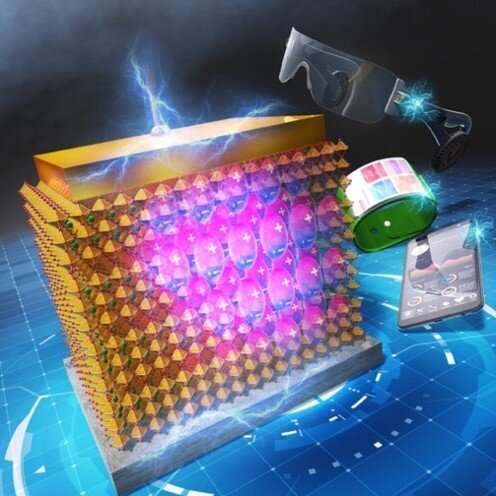Researchers at Institute for Materials and Systems for Sustainability, Nagoya University and NIMS have achieved a remarkable milestone in energy storage with the development of an unparalleled nanosheet device.

The development of innovative energy storage technology plays a crucial role in maximising the utilisation of renewable energy and facilitating the widespread adoption of electric vehicles. Existing energy storage solutions, like lithium-ion batteries, face challenges such as extended charging durations, issues with electrolyte degradation, limited lifespan, and even potential safety concerns like unintended ignition. Dielectric energy storage capacitors offer a promising alternative. They consist of metal electrodes separated by a solid dielectric film, which stores energy through polarisation.
In collaboration with NIMS, researchers at the Institute for Materials and Systems for Sustainability (IMaSS), Nagoya University in Japan, have achieved a significant breakthrough in energy storage by developing a nanosheet device with unparalleled performance. Applying an electric field to the capacitor attracts positive charges to the negative electrode and negative charges to the positive electrode, enabling energy storage through dielectric film polarisation.
Due to the correlation between the stored energy in a dielectric capacitor and its polarisation level, maximising the electric field applied to a material with a high dielectric constant is crucial in achieving superior energy density. Unfortunately, the capacity of current materials to withstand electric fields imposes a limitation on this endeavour. The team utilised nanosheet layers of calcium, sodium, niobium, and oxygen to push beyond traditional dielectric studies, featuring a perovskite crystal structure. The researchers have found high polarisation dielectrics can efficiently convert a strong electric field into electrostatic energy without losses, achieving record energy density.
The team’s findings confirmed that nanosheet dielectric capacitors achieved a significantly higher energy density, surpassing previous levels by 1-2 orders of magnitude. Remarkably, these nanosheet-based capacitors maintained their high output density while exhibiting stability across multiple usage cycles and even at temperatures up to 300°C. This accomplishment establishes new design principles for advancing dielectric capacitors and holds promise for implementing nanosheets in all-solid-state energy storage devices. These nanosheets offer numerous benefits, including high energy density, high power density, rapid charging times in mere seconds, extended lifespan, and exceptional stability even at elevated temperatures.
Dielectric capacitors rapidly release energy, generating intense pulsed voltage or current for various applications, including hybrid vehicles, high-power accelerators, and microwave devices.
Reference: Hyung-Jun Kim et al, Ultrahigh Energy Storage in 2D High-κ Perovskites, Nano Letters (2023). DOI: 10.1021/acs.nanolett.3c00079






